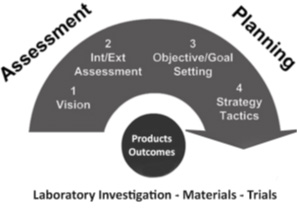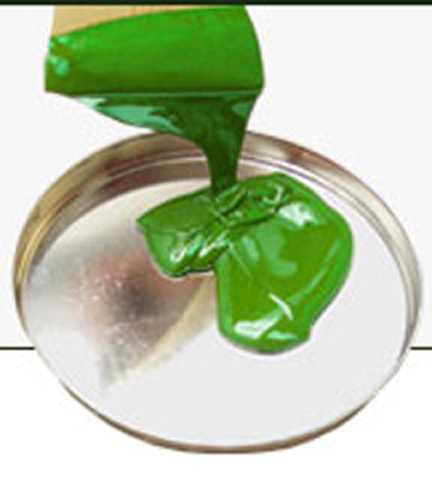Planning, Labs and Trials
- Published: May 16, 2023
By Susan Stansbury, Industry Consultant
It’s useful to know where you can find a laboratory to do initial testing of your product idea or improvement. Then, you may need to run machine trials to get a first impression of how your goals will be met.
First, Do the Planning
The old phrase “garbage in, garbage out” is not only true, but can be devastating to budgets and timelines. Without going into a treatise, I note that it’s critical to do the up-front work before thinking about laboratory resources and selecting equipment to run the trials. Some steps should lead to the hands-on work. A basic overview look comes first.

Prior to development, some issues are resolved. In packaging, they include:
- Choosing materials for performance and delivery of features;
- Selecting materials that can be recycled, reused or offer other environmental benefits;
- Considering design of packaging life cycle for reuse, refill;
- Packaging that optimizes labeling, printing and benefits;
- Effective design, with cost targets, being highly competitive;
- Asking: Does the package provide good access to the product?;
- Asking: How well does the package protect its contents?;
- Keeping ingredients/content fresh and intact use after use?; and,
- How well does the container open after repeated usage?
Laboratory Support
 Your team will likely devise a set of questions to help you select a lab to meet your needs. For example:
Your team will likely devise a set of questions to help you select a lab to meet your needs. For example:
- Do you know any laboratory prospects? Can a supplier assist?;
- What labs work in your product or market world?;
- Does your product have to meet hurdles like FDA or other regulatory requirements? What labs work in this world?;
- Can one lab carry out multiple requests?;
- What materials, chemicals or elements will the lab use?;
- What confidence will you/the lab demonstrate in results?;
- Are there special capabilities the lab may have? (e.g., skin sensitivity, shelf life, deconstruction/reverse engineering);
- Does the lab test pre-product and post-production (meets your/your customer requirements, specifications); and,
- Can the lab assist with developing testing protocols?
Lab choices include professionals in the paper industry such as intertek that offers a full scope of testing to standards from the Technical Association of the Pulp and Paper Industry (TAPPI). Another paper industry option is SGS-IPS Testing whose work includes abrasion resistance, wet and dry ink rub tests.
Specialty labs like NSF (National Sanitation Foundation) can assist with suggestions as well as testing. For example, one team worked with its specialty group on N-95 mask requirements.
At Press Color Inc., Amber Schuh, vice president, explained her background and approach: “Although my day-to-day tasks have taken me a bit away from the biochemical pathways my dissertation was on, I continue to use my Ph.D. experience for experimental design in our research and development pursuits. We tailor our inks and coatings for each individual customer to optimize performance on their specific equipment. Whether that is meeting a customer’s end use resistance requirements, CoF specifications, desired gloss or a variety of other parameters our lab works one-on-one with our customers for optimization of their inks and coatings.”
Trials: Size, Materials, Testing
Selection of where to run trials or just prototype prior to scale-up can make or break the project. For example, your trial may necessitate bringing in raw materials to the converter. The substrate may need to be cut to a size that accommodates the product specification. The whole effort can include:
- A particular substrate at a certain width and thickness. It could require a slitting company that handles narrow webs or diameters. Sometimes the trial provider has this on hand or can do the slitting-winding.
- The substrate may need to be pre-printed, coated or laminated prior to the trial where, for example, it becomes a pouch, a wipe in a canister, a package, a pressure-sensitive label or release liner.
Telling the product developer that the trial will require work with three companies during development is not easy. And the cost may be well beyond the anticipated budget.
Prototyping to a high standard is not common. An exception is Rebel Converting’s capabilities in the world of wipes in a canister. This Milwaukee-based supplier uses full digital technology which allows Rebel to provide customers with sample canisters identical to those from a final production run. It becomes easy to prototype canisters for customers to test market new products, various label brands and designs.
In the nonwovens industry, there are a myriad technologies, so a supplier like Biax-Fiberfilm/5K Fibres transforms resin polymers into various nonwovens and often accommodates needs for widths, performance parameters ranging from HVAC filtration to N95 mask media.
For laboratory assistance and machine trials, it’s crucial to do enough investigation prior to the rollout of your innovation.
ABOUT THE AUTHOR
Susan Stansbury is a converting advocate with extensive experience in paper, converting, printing and related industries serving in roles including sales, marketing and product development.









